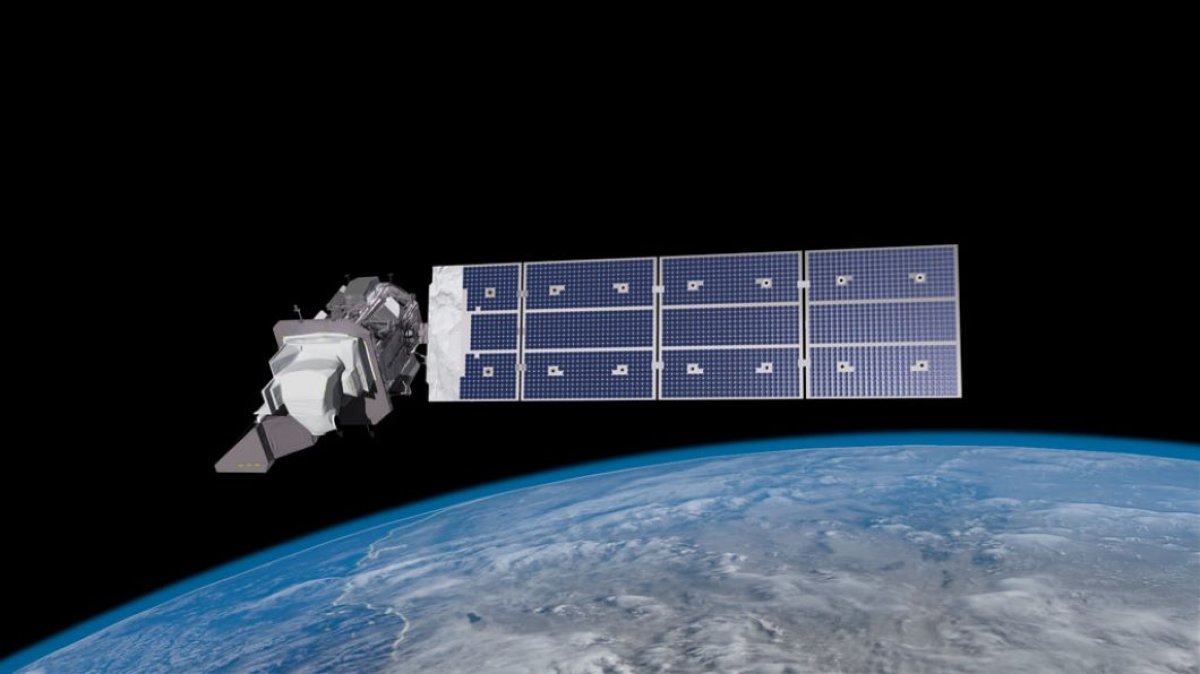Landsat 9, the newest and most powerful Earth-observing satellite, is set to launch on Monday.
The satellite, which is a joint project between NASA and the U.S. Geological Survey (USGS), will continue the Landsat mission of monitoring Earth's land and coastal regions, assessing the effect of human activity on the planet and the progress of climate change, which began with the launch of the first Landsat satellite in 1972.
Landsat 9 is set to launch atop a United Launch Alliance (ULA) Atlas V 401 rocket from Space Launch Complex 3 at Vandenberg Space Force Base, California, at 2:11 p.m. ET.
The #Landsat legacy is long and storied, but the mission is a team player. With our partners like @USGS, Landsat data is one thread in a tapestry of Earth observations. We look forward to tomorrow, watching Landsat 9 take its place with its peers in orbit.https://t.co/FYvyaOyplj pic.twitter.com/CeTPZAkGCE
— NASA Earth (@NASAEarth) September 27, 2021
Its high-resolution camera and infrared sensor can monitor the Earth in 11 spectral bands, with the ability to focus down to resolve objects at a width of around 50 feet. It will image the entire planet once every 16 days.
The satellite will join its predecessor Landsat 8 in an orbit of about 438 miles above the Earth's surface. The ninth satellite in the Landsat mission, it will follow its predecessor out of phase by eight days to ensure maximum global coverage over time.
The data that Landsat 8, launched in 2013, collects is currently used to monitor the health of the Earth and the effects of climate change, and assist in the management of resources like crops and irrigation water.
"Landsat 9 will extend our ability to measure changes on the global land surface at a scale where we can separate human and natural causes of change. When land use and resource availability issues arise, Landsat 9 will help decision-makers make informed management decisions," NASA says. "Landsat 9 will thus contribute a critical component to the international strategy for monitoring the health and state of the Earth."
Landsat 9 will capture around 750 images of the planet every day, when added to the images provided by Landsat 8, this means that the two satellites will be adding around 1,500 new images every day to the USGS Landsat archive.
The new satellite will image all global landmasses and nearshore coastal areas, this will include some islands which have solar elevations that prevent them from being monitored by the Landsat missions prior to 8.
The two instruments carried by Landsat 9 are upgraded versions of those aboard the Landsat 8 satellite which have already provided images more detailed than those of previous Landsat generations.
The Operational Land Imager 2 (OLI-2) will observe Earth's surface in visible, near-infrared, and short wave light bands of the electromagnetic spectrum. OLI-2's signal is improved on the version, OLI, carried by Landsat 8.
As OLI-2 monitors the planet in these regions of the spectrum, Thermal Infrared Sensor 2 (TIRS-2) will measure thermal radiance emitted from the surface of Earth. Again this instrument is an upgrade of TIRS carried by Landsat 8, which will make thermal measurements with less interference by stray light.
Both instruments have an operational lifetime of around five years, though the satellite will carry enough consumable materials to allow operations to continue for a full decade.
Landsat 9 won't be alone on launch. Four CubeSats, 8-inch by 4-inch by 13-inch mini-satellites used for missions that require low-Earth orbits, will tag along for the ride as secondary payloads.
Two of these CubeSats will be part of NASA's 34th Educational Launch of Nanosatellites (ELaNa) mission, providing insights for the university researchers that developed them.
One of these shoebox-sized satellites is the Colorado Ultraviolet Transit Experiment (CUTE) from the University of Colorado at Boulder, which aims to help understand atmosphere loss in exoplanets. The other is the Cusp Plasma Imaging Detector (CuPID) from Boston University which will examine how energy from the Sun is deposited to the Earth's magnetic field.
The mission of the other two CubeSats, operated by the U.S. Space Force, is undisclosed.
A backup window for the launch has been set for Tuesday, weather permitting.

Uncommon Knowledge
Newsweek is committed to challenging conventional wisdom and finding connections in the search for common ground.
Newsweek is committed to challenging conventional wisdom and finding connections in the search for common ground.
About the writer
To read how Newsweek uses AI as a newsroom tool, Click here.








